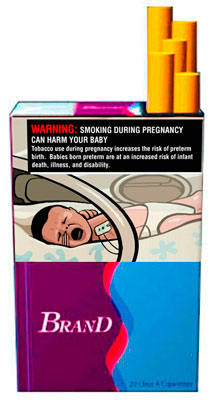 A controlled experimental study of over 5300 smokers conducted by the University of Pennsylvania’s Annenberg Public Policy Center (APPC) posted to the FDA comment website (http://www.regulations.gov/#!submitComment;D=FDA-2010-N-0568-0006) today shows that multiple versions of the proposed warnings produce desired effects by increasing negative feelings respondents experience about smoking a next cigarette. “By failing to study the labels’ effects on affect, the FDA sponsored research missed a key factor that contributes to a commitment to give up smoking,” noted Dan Romer, director of the APPC’s Adolescent Communication Institute. “And they also underestimated the power of some of the proposed warning labels.” The Annenberg study replicated findings from an earlier APPC study that identified the effects of Canadian cigarette pack labels on feelings about smoking (see Peters, Romer, Slovic, et al., Nicotine & Tobacco Research, 2007; 9:473-481.).
A controlled experimental study of over 5300 smokers conducted by the University of Pennsylvania’s Annenberg Public Policy Center (APPC) posted to the FDA comment website (http://www.regulations.gov/#!submitComment;D=FDA-2010-N-0568-0006) today shows that multiple versions of the proposed warnings produce desired effects by increasing negative feelings respondents experience about smoking a next cigarette. “By failing to study the labels’ effects on affect, the FDA sponsored research missed a key factor that contributes to a commitment to give up smoking,” noted Dan Romer, director of the APPC’s Adolescent Communication Institute. “And they also underestimated the power of some of the proposed warning labels.” The Annenberg study replicated findings from an earlier APPC study that identified the effects of Canadian cigarette pack labels on feelings about smoking (see Peters, Romer, Slovic, et al., Nicotine & Tobacco Research, 2007; 9:473-481.).
Drawing on the content of the Canadian labels, the study also isolated ways in which the efficacy of the labels can be increased.

